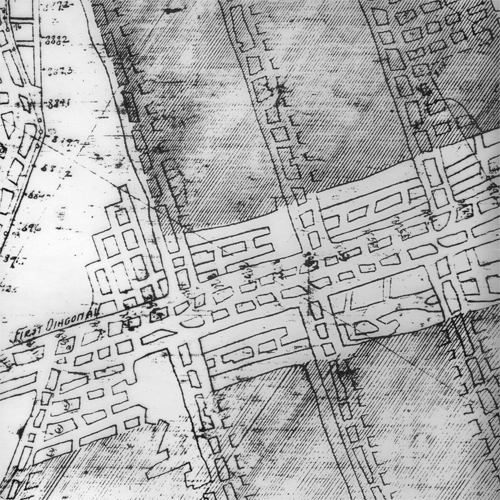“My Head and Stay” sung by Ginny Hawker (live recording)
Instrumentation: Chorus, Appalachian Ensemble, Synthesizer, Electronics
Duration: 90:00
Commission: Shepherd College and the Lila-Wallace Readers Digest Arts Partners Program
Premiere: 11/12/94
Masterworks Chorale of Shepherdstown, conducted by Jay Stenger
Dave Bing, fiddle, Ginny Hawker, voice, Tracy Schwarz, voice and guitar, Sam Herman, hammer dulcimer, Diane Jones, banjo, Mary Beth Pearce, synthesizer
Shepherd College, Shepherdstown, WV
Program Note:
COAL is a folk oratorio, scored for chorus, Appalachian band (2 singers, fiddle, guitar, hammer dulcimer, banjo) keyboard and electronic playback), COAL was commissioned as the culmination of a two-year retrospective of my music at Shepherd College in Shepherdstown, West Virginia, 1992-94. Funded by the Lila Acheson Wallace – Readers Digest Arts Partners Program, the residency consisted of four week-long residencies, each devoted to a different aspect of my music. For the final project, I wanted to create a work that spoke directly to the people of the region, though the topic has universal resonance, and decided to create a work about the culture and lore of coal mining in West Virginia. Moreover, I created my own libretto, while using a few extant texts and tunes.
I undertook an extended period of research (over 1.5 yrs.) that involved many components: travel around the state to talk with people who worked in coal mining; study in archives at the West Virginia Regional History Collection at West Virginia University Library and the Kraft Memorial Archive in Bluefield; a stay at the Augusta Heritage Center in Elkins where I studied Appalachian singing with Ginny Hawker and Tracy Schwarz; a trip to the National Mine Health and Safety Academy in Beckley; a visit to the Beckley exhibition mine; and a trip to Eagle Nest coal mine to record sounds and experience underground operations like longwall mining, continuous mining, and roof bolting. COAL focuses primarily on the period from the late 19th to the mid-20th century, though later developments come into play as well. Lyrics from extant sources included the first verse and tune from “That Little Lump of Coal” by JN York and the lyrics of “We Done Quit” by Sam Johnson, both collected by George Korson in his marvelous book Coal Dust on the Fiddle, published by the University of Pennsylvania Press and now out of print. I also set “My Head and Stay,” a primitive Baptist Hymn to my own music, and rewrote the labor anthem Solidarity to reflect the history of coal miners in West Virginia. Appropriately, the original words were penned by Ronnie Chapin in Paint Creek during a period of mining strife in 1913.
Many people have asked me what kind of piece COAL is … an opera? a musical? a symphony? It is none of these. It is closest to an oratorio, and I call it a folk oratorio. It is similar in its large narrative scope (oratorios have biblical themes), in its separate numbers for different instrumental combinations, and in the concert presentation. But to define it in relation to a previous genre is perhaps to miss its unique aspect: the interweaving of musics of different traditions, including Old Time Appalachian musicians, with their spontaneous and sophisticated music-making and classically trained musicians, with their highly developed ability to realize and interpret notated scores. In addition, there is the use of new technologies which enable the composer to invent and transform sounds in ways unavailable until recently. This piece is the first to use the computer music language HACK (Hierarhical Audio Construction Kit) by Pete Yadlowsky, then technical director of the Virginia Center for Computer Music.
Creating COAL became not only an adventure in making connections between people’s lives and art but also a way of intertwining different musical traditions. Conductor Jay Stenger, the Masterworks Chorale and the traditional musicians involved in the premiere responded to this challenge with aplomb. COAL was nominated for the Pulitzer Prize in 1994. –JS
Press Quote:
“The term ‘folk oratorio’ looks like an oxymoron, yet Judith Shatin’s Coal blends folk and oratorio so skillfully that it not only makes sense, but can be transposed to other places as a prototype, tying regional industry to art.”
–Chorus! Volume 7, #5
“One of the strengths of this piece is it’s range, from explanatory to descriptive to dramatic, from traditional to contemporary. “ –ILWJ (International League of Women Composers Journal), 1994

